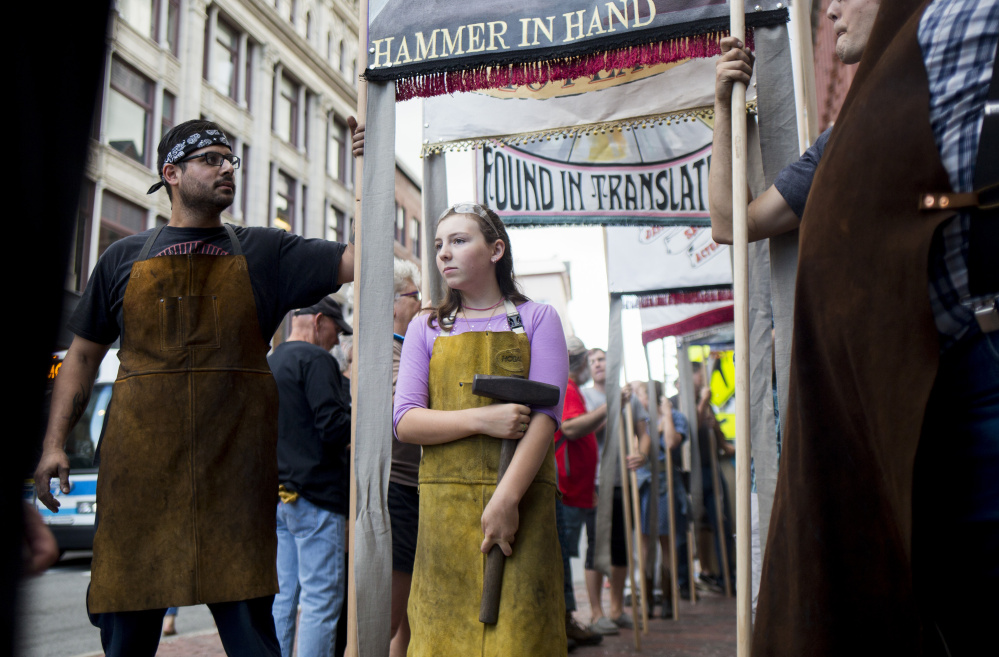ORONO — Labor Day, which symbolizes the dignity and value of labor, was inaugurated in Maine in 1891. The birth of labor’s holiday was marked by all the excitement that characterizes new beginnings.
It did not, however, mean that the conflict between labor and capital had ceased or that the ideological climate had radically tilted in labor’s favor. Indeed, the very same Legislature that enacted Labor Day refused to enact a law to prevent the blacklisting of discharged employees. Witness, also, members of the Steam Railroad Men’s Protective Union of Portland who, when requesting a bill reducing working hours and for employers’ liability legislation, were compelled to sign their names in circle fashion (“round-robin”) so that their leaders could not be readily identified.
While these examples serve to indicate that Labor Day was not an elixir for labor’s problems, Labor Day parades proclaiming the dignity and value of labor became the order of the day.
Labor’s use of the parade as an expression of pride, protest and patriotism reaches deep into Maine history. As early as July 4, 1815, Portland’s “mechanics” – the generic term for those who labored with their hands – paraded to celebrate the nation’s independence. The jewel of early labor parades, however, took place in 1841, when masters, journeymen and apprentices carried 17 beautifully crafted silk banners through the city streets
That parade was novel in the sense that the members of each trade or craft grouped themselves together and carried banners that conveyed their wit, pride and sense of social usefulness to the community.
The silk banners carried by the artisans were covered with appropriate mottoes and sentiments. Most of their staffs included tools or emblems of their trades: the butchers, for example, had knife and steel; the machinists, a miniature steam engine; the painters, a brush; the housewrights, a hammer; the shoemakers, an awl, and so forth.
The banners were clearly more than expressions of decorative art. They represented the collective consciousness of the artisans in their efforts to secure for themselves the measure of dignity they believed they deserved and their general resistance to the political and economic privileges rooted in the social divisions of society. As exponents of artisan “republicanism,” they were sensitive to privilege and ranking in any quarter of society, which stood in violation of the social equality, respect and independence promised in the Declaration of Independence. Their Revolutionary heritage was on parade.
The banners shouted that the mechanics owed deference to no one relative to their place in the community and called for what one periodical referred to “their just bearing in society.” Artisans condemned the prejudicial and arrogant attitudes of those of wealth and power who believed that those who worked with their hands and wore the leather apron and leather breeches were “incompatible with refinement, mental power and moral greatness.”
They fiercely resented the view that they were “mere mechanics” – members of the lower orders, described by pseudonymous novelist Allen Chapman as the “ragtail and bobtail” of society, and looked down on, according to historian Sean Wilentz, as the “vague lower and middling sort of the revolutionary mobs” – and proclaimed that they were proud artisans of the productive arts or the mechanical arts whose skills were the foundation of civilization.
This Labor Day weekend, the streets of Portland witnessed the rebirth of the meaning of the silk banners of 1841. Drawing inspiration from the archival banners, University of New Mexico art historian Ellen Babcock, a 1984 Maine College of Art graduate, hand painted 13 4-foot-by-5-foot fringed cloth banners, mounted on 10-foot wooden poles held aloft by two individuals in the Working People’s Parade (so called because it occurred at 6 p.m. Sept. 2, rather than on Labor Day). Images and slogans inspired by the iconic banners linked the banners, and disparate groups of people chose which one of the banners to follow.
The parade began at the venerable Maine Charitable Mechanics Hall and ended at Monument Square. The banners served as a powerful example that the written word is not the only means to communicate meaning and purpose.
The banners and parade united the past with the present and reminded us that workers are more than just units of energy, as well as underscoring the fact that the new world of global markets, the information and communications revolutions, artificial intelligence and robotics, sweeping demographic changes, the renaissance of classical liberal doctrines and employer offensives against organized labor does not erase the cardinal Labor Day message of the dignity and value of labor.
Send questions/comments to the editors.



Comments are no longer available on this story